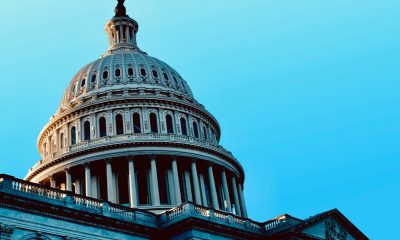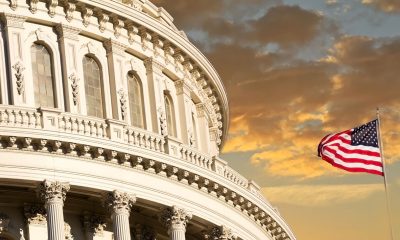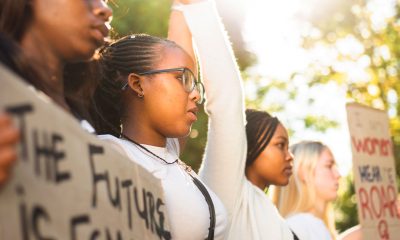Opinion
The Lie About Voter Fraud Is The Real Fraud
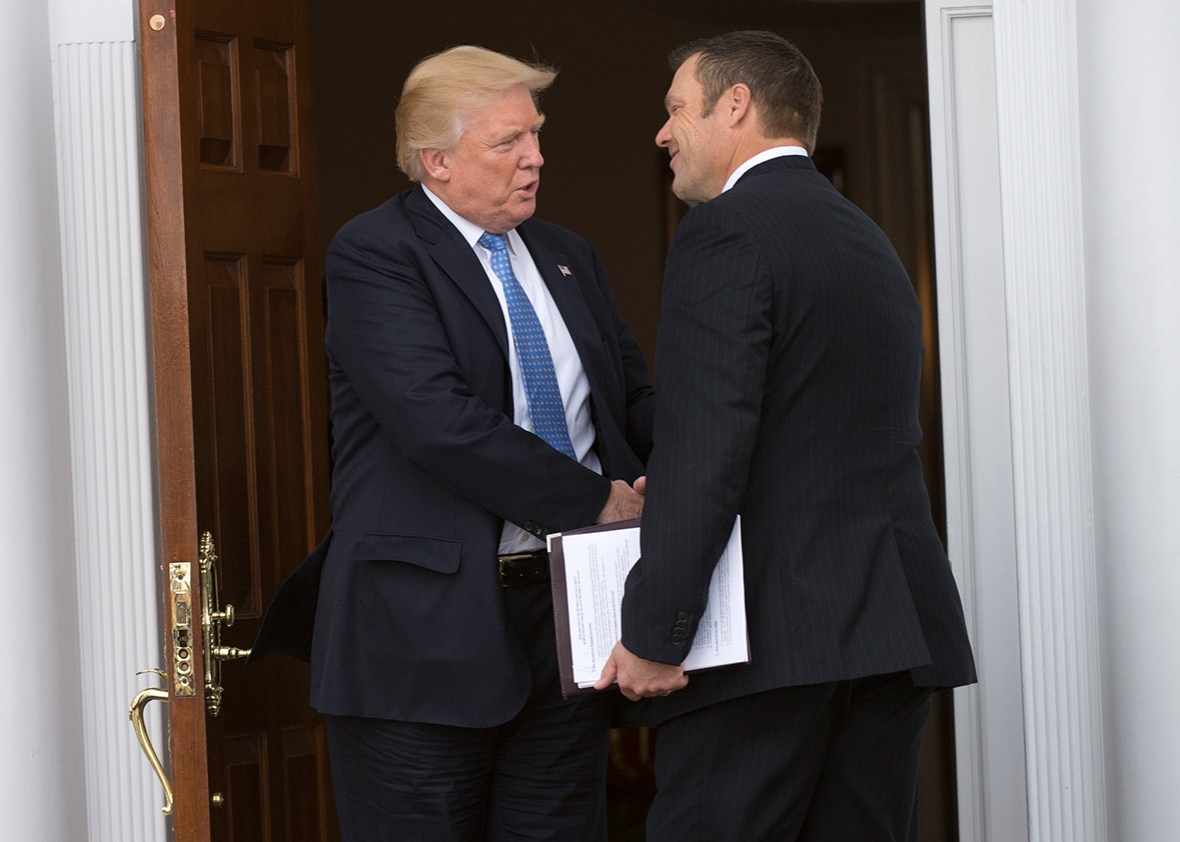
After President Donald Trump fired FBI Director James Comey because of, as Trump admitted, the “Russian thing,” he struck a new blow to American democracy: He created a commission on “election integrity,” stemming from his fantastical claims of voter fraud in the 2016 election.
In reality, fraudulent voting is virtually nonexistent. The claims of widespread voter fraud are a fraud. Voter suppression, on the other hand, is a real, present and increasing threat to our democracy. And all signs are that Trump’s commission will add to that threat.
Trump named Vice President Mike Pence as chair, with Kansas Secretary of State Kris Kobach, a leading advocate of ballot-restricting legislation, as vice chair. Kobach has made a national spectacle of himself as a crazed pursuer of mythical voter fraud. In Kansas, Kobach has led Republican efforts to suppress the vote.
As Ari Berman of the Nation reports, Kobach claimed that “the illegal registration of alien voters has become pervasive,” although he could point to only five alleged cases of noncitizens voting in Kansas during the previous 13 years.
Kobach helped push through a law that required documentary proof of citizenship to register to vote, such as a birth certificate, a passport or naturalization papers. That requirement disproportionately impacts the elderly, the poor and the young, who often don’t have access to such papers. Since the law went into effect in 2013, Berman reports, “one in seven Kansans who attempted to register have had their registrations held ‘in suspense’ by the state.”
To solve the non-problem of voter fraud, in 2015 Kansas gave Kobach the power to prosecute such cases. So far, he’s convicted nine people. Only last month did he convict his first and only noncitizen for voting fraud. The Kansas City Star has noted the paltry results Kobach has to show for his unique prosecutorial powers, mocking him as the “Javert of voter fraud,” a reference to the obsessed police inspector of “Les Miserables.”
Now Kobach will be the driving force leading Trump’s commission. Its purpose, no doubt, will be to cry wolf about voter fraud and push more states to pass harsh legislation to suppress the vote.
Unlike voter fraud — which every independent study shows is essentially a myth — voter suppression is real and growing. The most significant outside factor in the 2016 campaign was not the scattered cases of voter fraud, or Putin’s hacking, or even former FBI Director Comey’s interventions. The most significant factor was the suppression of the vote — particularly the black vote — in North Carolina, Philadelphia, Detroit and Milwaukee. As Berman has argued, federal court records show that “300,000 registered voters, 9 percent of the electorate, lacked strict forms of voter ID in Wisconsin.” A recent study by Priorities USA, a Democratic PAC, estimated that Wisconsin’s harsh voter ID laws “reduced turnout by about 200,000 votes” — disproportionately black votes. Trump won the state by 22,748 votes.
The 2016 election was the first in 50 years without the full protections of the Voting Rights Act. Fourteen states had new voting restrictions in effect for the first time. Now Berman reports, 87 bills to restrict access to the ballot have been introduced in 29 states this year. Arkansas and Iowa have already passed strict voter-ID laws.
Republicans claim these laws are needed to stop voter fraud, but, again, the claims of voter fraud is the fraud. These bills are being pushed because they make it harder for certain communities to vote — and Republicans benefit when they vote in smaller numbers.
When politicians can pick their voters — by voter suppression laws, by gerrymandering, by big money campaigns — rather than voters picking their leaders, democracy is mocked. Political leaders in both parties should be pushing to make it easier, not harder, to vote. Instead, voter suppression has become a partisan weapon. Our very democracy is under assault.
Advice
COMMENTARY: If You Don’t Want Your ‘Black Card’ Revoked, Watch What You Bring to Holiday Dinners
From Thanksgiving to Christmas to New Year’s Day, whether it’s the dining room table or the bid whist (Spades? Uno, anyone?) table, your card may be in danger.

By Wanda Ravernell
Post Staff
From the fourth week of November to the first week in January, if you are of African descent, but particularly African American, certain violations of cultural etiquette will get your ‘Black card’ revoked.
From Thanksgiving to Christmas to New Year’s Day, whether it’s the dining room table or the bid whist (Spades? Uno, anyone?) table, your card may be in danger.
It could take until Super Bowl Sunday for reinstatement.
I don’t know much about the card table, but for years I was on probation by the ‘Aunties,’ the givers and takers of Black cards.
How I Got into Trouble
It was 1970-something and I was influenced by the health food movement that emerged from the hippie era. A vegetarian (which was then considered sacrilegious by most Black people I knew) prepared me a simple meal: grated cheese over steamed broccoli, lentils, and brown rice.
I introduced the broccoli dish at the Friday night supper with my aunt and grandfather. She pronounced the bright green broccoli undone, but she ate it. (I did not, of course, try brown rice on them.)
I knew that I would be allowed back in the kitchen when she attempted the dish, but the broccoli had been cooked to death. (Y’all remember when ALL vegetables, not just greens, were cooked to mush?)
My Black card, which had been revoked was then reattained because they ate what I prepared and imitated it.
Over the decades, various transgressions have become normalized. I remember when having a smoked turkey neck instead of a ham hock in collard greens was greeted with mumblings and murmurings at both the dining room and card tables. Then came vegan versions with just olive oil (What? No Crisco? No bacon, at least?) and garlic. And now my husband stir fries his collards in a wok.
But No Matter How Things Have Changed…
At holiday meals, there are assigned tasks. Uncle Jack chopped raw onions when needed. Uncle Buddy made the fruit salad for Easter. My mother brought the greens in winter, macaroni salad in summer. Aunt Deanie did the macaroni and cheese, and the great aunts, my deceased grandmother’s sisters, oversaw the preparation of the roast beef, turkey, and ham. My father, if he were present, did the carving.
These designations/assignments were binding agreements that could stand up in a court of law. Do not violate the law of assignments by bringing some other version of a tried-and-true dish, even if you call it a new ‘cheese and noodle item’ to ‘try out.’ The auntie lawgivers know what you are trying to do. It’s called a menu coup d’état, and they are not having it.
The time for experiments is in your own home: your spouse and kids are the Guinea pigs.
My mother’s variation of a classic that I detested from that Sunday to the present was adding crushed pineapple to mashed sweet potatoes. A relative stops by, tries it, and then it can be introduced as an add-on to the standard holiday menu.
My Aunt Vivian’s concoctions from Good Housekeeping or Ladies’ Home Journal magazine also made it to the Black people’s tables all over the country in the form of a green bean casserole.
What Not to Do and How Did It Cross Your Mind?
People are, of all things holy, preparing mac ‘n’ cheese with so much sugar it tastes like custard with noodles in it.
Also showing up in the wrong places: raisins. Raisins have been reported in the stuffing (makes no sense unless it’s in a ‘sweet meats’ dish), in a pan of corn bread, and – heresy in the Black kitchen – the MAC ‘n’ CHEESE.
These are not mere allegations: There is photographic evidence of these Black card violations, but I don’t want to defame witnesses who remained present at the scene of the crimes.
The cook – bless his/her heart – was probably well-meaning, if ignorant. Maybe they got the idea from a social media influencer, much like Aunt Viv got recipes from magazines.
Thankfully, a long-winded blessing of the food at the table can give the wary attendee time to locate the oddity’s place on the table and plan accordingly.
But who knows? Innovation always prevails, for, as the old folks say, ‘waste makes want.’ What if the leftovers were cut up, dipped in breadcrumbs and deep fried? The next day, that dish might make it to the TV tray by the card table.
An older cousin – on her way to being an Auntie – in her bonnet, leggings, T-shirt, and bunny slippers and too tired to object, might try it and like it….
And if she ‘rubs your head’ after eating it, the new dish might be a winner and (Whew!) everybody, thanks God, keeps their Black cards.
Until the next time.
Activism
Oakland Post: Week of December 10 – 16, 2025
The printed Weekly Edition of the Oakland Post: Week of – December 10 – 16, 2025
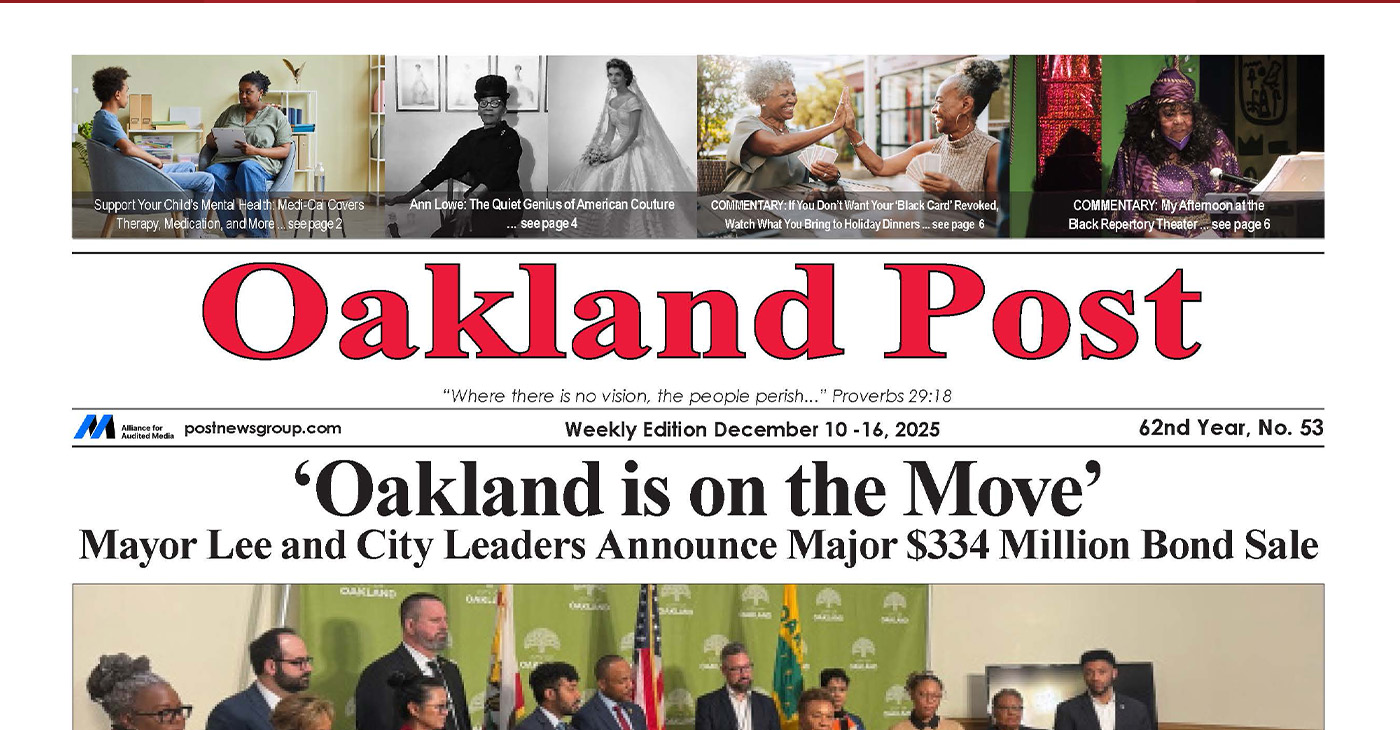
To enlarge your view of this issue, use the slider, magnifying glass icon or full page icon in the lower right corner of the browser window.
Activism
Oakland Post: Week of November 26 – December 2, 2025
The printed Weekly Edition of the Oakland Post: Week of November 26 – December 2, 2025

To enlarge your view of this issue, use the slider, magnifying glass icon or full page icon in the lower right corner of the browser window.
-

 Activism4 weeks ago
Activism4 weeks agoIN MEMORIAM: William ‘Bill’ Patterson, 94
-

 Activism3 weeks ago
Activism3 weeks agoOakland Post: Week of November 19 – 25, 2025
-

 #NNPA BlackPress3 weeks ago
#NNPA BlackPress3 weeks agoBeyoncé and Jay-Z make rare public appearance with Lewis Hamilton at Las Vegas Grand Prix
-

 #NNPA BlackPress4 weeks ago
#NNPA BlackPress4 weeks agoLewis Hamilton set to start LAST in Saturday Night’s Las Vegas Grand Prix
-

 #NNPA BlackPress2 weeks ago
#NNPA BlackPress2 weeks agoLIHEAP Funds Released After Weeks of Delay as States and the District Rush to Protect Households from the Cold
-

 Alameda County2 weeks ago
Alameda County2 weeks agoSeth Curry Makes Impressive Debut with the Golden State Warriors
-
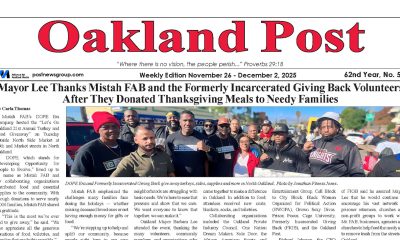
 Activism3 weeks ago
Activism3 weeks agoOakland Post: Week of November 26 – December 2, 2025
-

 #NNPA BlackPress2 weeks ago
#NNPA BlackPress2 weeks agoSeven Steps to Help Your Child Build Meaningful Connections

